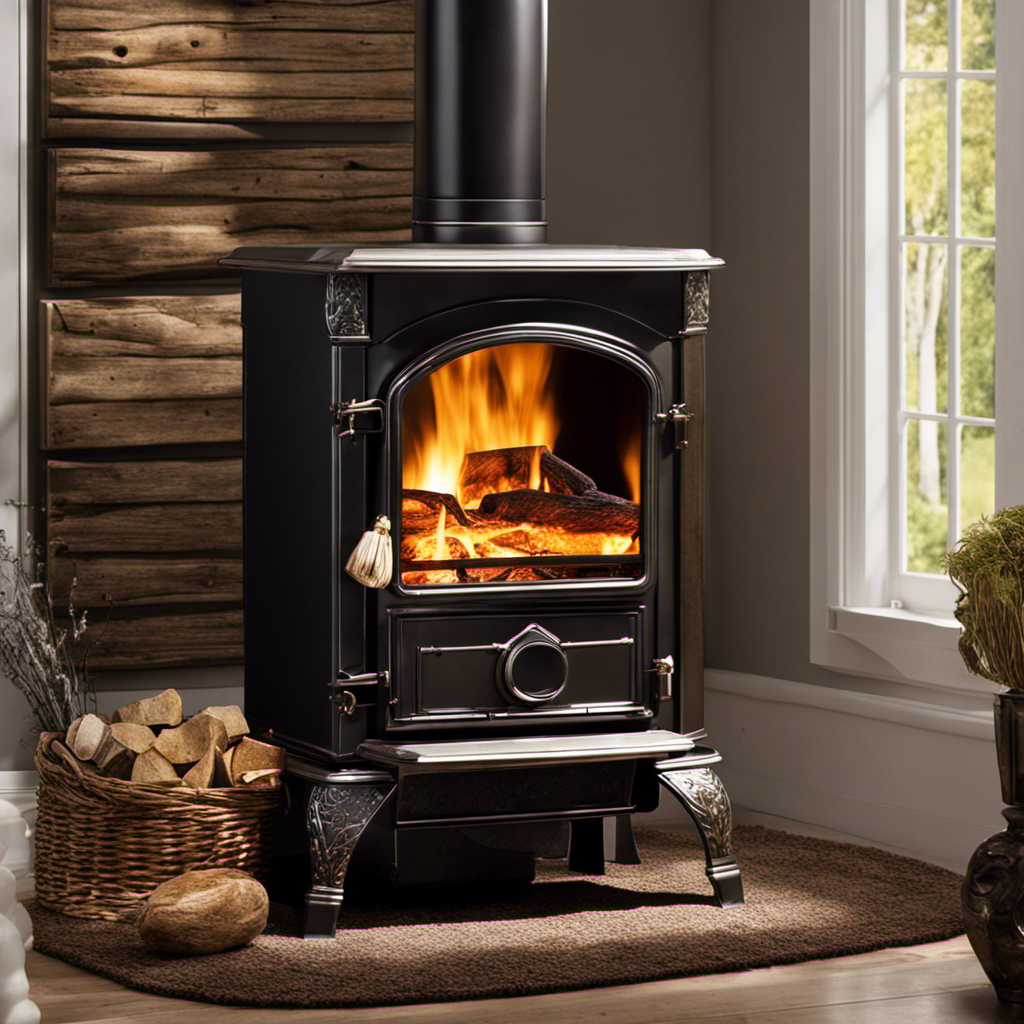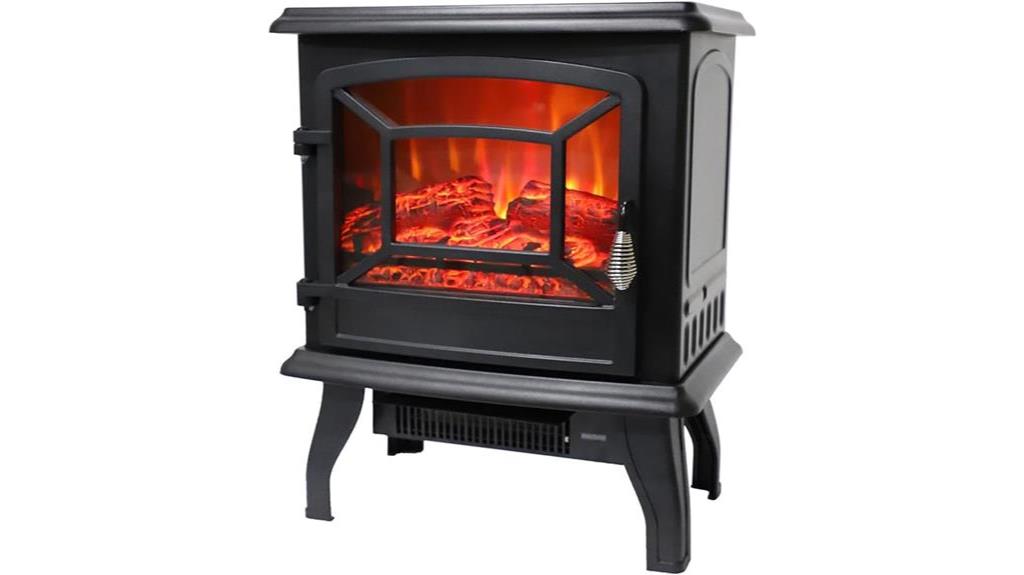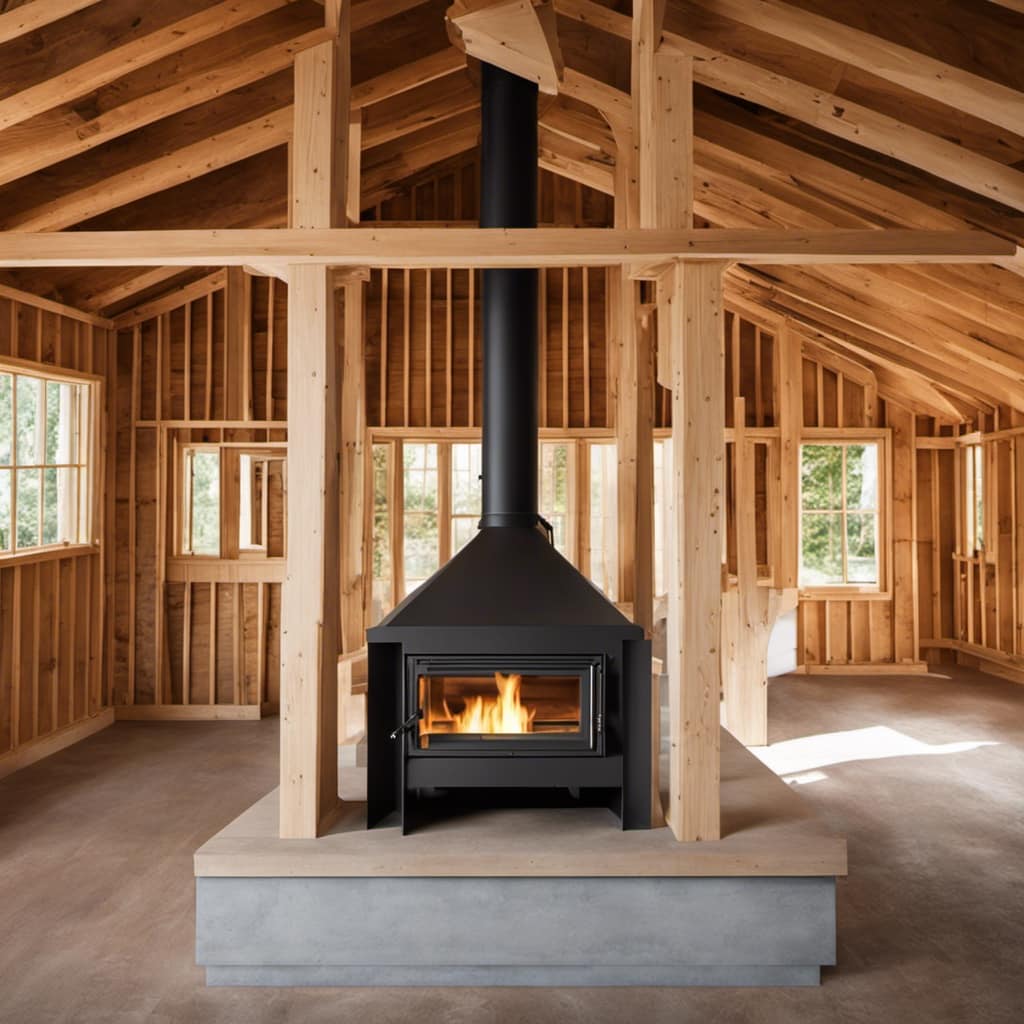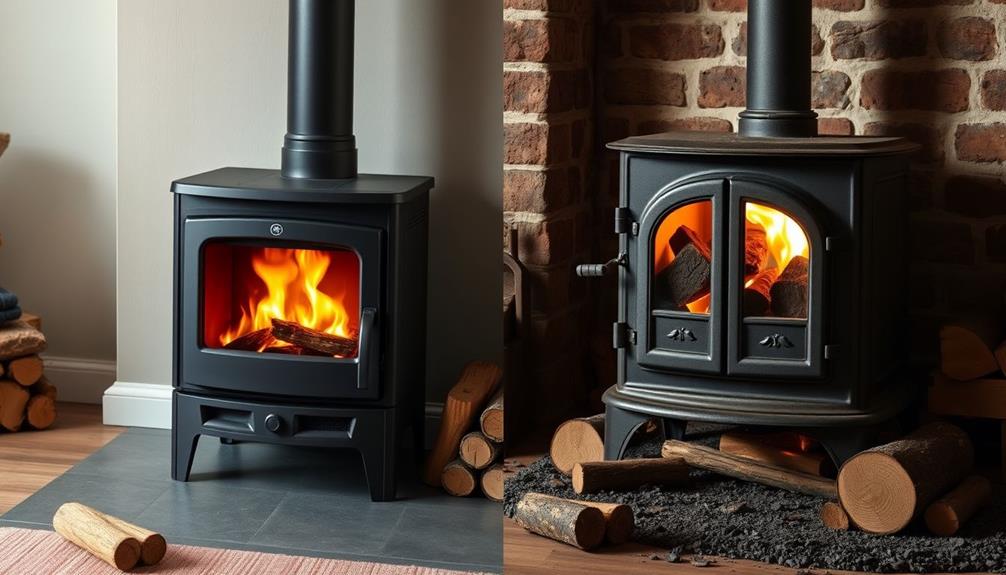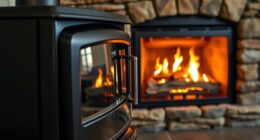Were you aware that using wood stoves is a cost-effective and efficient way to heat your home?
With so many options available, choosing the right wood stove can be overwhelming. Don’t worry, I’m here to help!
In this article, I’ll guide you through the factors to consider, such as sizing, efficiency, installation requirements, and maintenance tips.
By the end, you’ll be well-equipped to select the perfect wood stove that suits your needs and keeps your home cozy all winter long.
Key Takeaways
- Establish a budget for the wood stove, including installation and maintenance expenses.
- Choose an EPA-certified wood stove for reduced air pollution and environmental impact.
- Select a wood stove with a heating capacity suitable for your home size.
- Choose a wood stove with a secondary combustion system to burn gases and particulate matter efficiently.
Factors to Consider
I’m thinking about the factors I need to consider when choosing a wood stove.
One of the first things that come to mind is cost and budget considerations. Wood stoves come in a wide range of prices, so it’s important to establish a budget beforehand. Consider not only the initial cost of the stove but also the installation and maintenance expenses.
Another crucial factor to think about is the environmental impact and sustainability. Look for a wood stove that’s EPA-certified, as they’re designed to burn wood more efficiently, producing less smoke and reducing air pollution. Additionally, consider the type of wood you’ll be using. Opt for sustainably sourced firewood to ensure minimal impact on the environment.
Taking these factors into account will help you make an informed decision when choosing the right wood stove for your needs.
Sizing and Heating Capacity
After researching different wood stoves, I found that a stove with a heating capacity of at least 2,000 square feet would be ideal for my home. When selecting a wood stove, it’s important to consider the heating efficiency and fuel consumption. Here are three key factors to keep in mind:
-
Heating Efficiency: Look for a stove that has a high efficiency rating. This means that it can convert a larger portion of the wood’s energy into heat, resulting in better performance and lower fuel consumption.
-
Fuel Consumption: Consider the amount of wood the stove will consume. Look for stoves that have a lower fuel consumption rate, as this will save you money in the long run and reduce the environmental impact.
-
Proper Sizing: Ensure that the stove is appropriately sized for your home. A stove that’s too small will struggle to heat the space efficiently, while a stove that’s too large will waste energy and result in excessive fuel consumption.
Efficiency and Emissions
To ensure efficiency and reduce emissions, it’s crucial to choose a wood stove with a high combustion rating and proper ventilation.
When it comes to wood stove design, there are several factors to consider.
Firstly, look for a stove that has a secondary combustion system. This feature allows for the burning of gases and particulate matter that would otherwise be released into the atmosphere.
Additionally, opt for a stove that’s designed to burn efficiently with various fuel sources, such as wood pellets or compressed logs. This versatility allows for greater flexibility in fuel choices and can help reduce reliance on specific types of wood.
Lastly, proper ventilation is essential to ensure that the stove operates efficiently and effectively. A well-designed chimney system will facilitate the release of smoke and improve overall combustion.
Installation Requirements
Installing a wood stove requires careful consideration of both safety regulations and local building codes. It’s important to ensure that the stove is installed correctly to minimize the risk of fire and carbon monoxide poisoning. Here are three key factors to consider when installing a wood stove:
-
Cost considerations: Installing a wood stove involves not only the purchase of the stove itself but also the cost of installation, chimney lining, and any necessary upgrades to the existing chimney or ventilation system. It’s important to budget for these expenses to ensure a safe and efficient installation.
-
Environmental impact: Wood stoves can have a significant environmental impact due to the emissions they produce. It’s important to select a wood stove that’s EPA-certified and designed to burn wood efficiently, minimizing emissions and reducing the overall environmental impact.
-
Safety regulations and building codes: Before installing a wood stove, it’s crucial to familiarize yourself with the safety regulations and building codes in your area. These regulations may dictate the minimum distance the stove must be from combustible materials, the required clearance around the stove, and other safety measures that must be followed.
Considering cost considerations and the environmental impact, it’s essential to select the right wood stove and install it properly to ensure safety and efficiency.
Now, let’s move on to maintenance and safety tips to keep your wood stove running smoothly and safely.
Maintenance and Safety Tips
While regularly cleaning and inspecting your wood stove, I recommend having a professional chimney sweep service performed annually to ensure its safe operation.
In addition to this important step, there are several other maintenance tasks and safety precautions you should follow to keep your wood stove in top condition.
First, make sure to clean the stove regularly, removing any ash or debris that may have accumulated.
Check the door gasket for any signs of wear or damage, as a tight seal is crucial for efficient and safe operation.
Inspect the chimney for any blockages or creosote buildup, which can increase the risk of a chimney fire.
Finally, always use dry, seasoned wood and never overload the stove.
Conclusion
In conclusion, selecting the right wood stove involves considering factors such as sizing, efficiency, installation requirements, and maintenance.
One interesting statistic is that modern wood stoves are approximately 50% more efficient than their older counterparts, helping homeowners save on heating costs and reducing emissions.
By choosing a wood stove that suits your needs and adhering to safety guidelines, you can enjoy the cozy warmth and ambiance it provides while being environmentally conscious.

